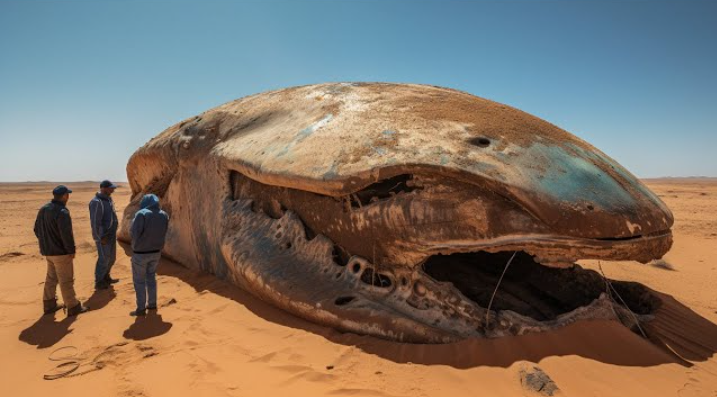
“Endless sandy landscapes, the scorching sun, and a complete absence of people around. This is how one of the most famous deserts in the world, the Sahara, is drawn in the imagination. It seems that the golden dunes have always been here, but this is not so. When you look at the Sahara, its endless sands and silent dunes make you want to know what lies under millions of tons of sand. In this issue, I promise to take a journey to the past and find out whether this part of the African continent has always been an arid and lifeless desert. What is hidden under the sands of the Sahara? Let’s find out.

The name Sahara comes from a common Arabic word, which in translation means simply ‘desert.’ Contrary to popular belief, the Sahara Desert is not the largest on Earth; the Antarctic desert holds the primacy. But among the usual deserts with sand, heat, and dunes, the Sahara is truly the largest. The desert covers almost one-third of the entire continent of Africa, spanning over 8.5 million square kilometers in land area. The Sahara spans across ten African countries and is surrounded by the Atlantic Ocean, the Red Sea, and the Mediterranean Sea.
With each passing year, the desert relentlessly expands to the south, claiming an additional 5 to 10 kilometers annually. While the common perception of the Sahara is one of towering sand dunes, cacti, and a lack of flora and fauna, in reality, only 20 percent of its terrain is covered by sand. The predominant landscape consists of rocky plateaus.
Although this region is not rich in animals, there are still about 4,000 species, including mammals like gerbils, gerboas, antelopes, jackals, dune cats, and mongooses. Most of these inhabitants are nocturnal and hide from the scorching sun during the day, as the Sahara’s temperature can reach an average of 35 degrees Celsius. The sun heats the sand even more, creating a feeling of being in a hellish frying pan.
The Sahara Desert boasts a dry and hot climate with rare precipitation, averaging only 75 millimeters of rain per year. The highest recorded temperature is nearly 58 degrees Celsius, while the temperature at night drops quickly to almost zero degrees, with frosts occurring in mountain plateaus with temperatures as low as -18 degrees.
Despite the harsh climate, the Sahara is rich in unique geological and biological features that continue to fascinate scientists and explorers alike. Many people traveling through the desert have suddenly seen oases with water and palm trees, thinking they are only a few kilometers away. In fact, it can sometimes be necessary to walk 500 kilometers or more to reach the nearest water source.
Mirages are a common phenomenon in the Sahara, with over 150,000 observed in the region. The difference from reality lies in the fact that the real object’s reflection in the atmosphere is visible, creating optical illusions.
One of the main wonders of the Sahara is located in Mauritania and is called the Richat Structure. This ring structure with a diameter of 50 kilometers dates back several hundred million years and has served as a reference point for astronauts due to its visibility from orbit.
Despite the harsh conditions, about 2 million people live in the Sahara, mainly Berbers and Tuaregs. In medieval times, trade caravans traveled through the desert, with the largest consisting of almost 12,000 camels.
To uncover the Sahara’s most important secrets, one must go deep into the desert’s heart. Under the sands of the Sahara lie vast pools of groundwater, thanks to which oases can be found in the desert’s arid areas. Some countries located in the Sahara, like Sudan, Chad, Egypt, and Libya, extract this precious liquid to provide water for their inhabitants.
The Sahara has not always been the arid desert we know today. About 8,000 years ago, it was a green forest with lush vegetation, grassy meadows, and clear lakes. There were ancient rock carvings and settlements of people who cultivated the land and raised cattle. There was even a massive Tamanrasset River that flowed into the Atlantic Ocean.
Scientists have different hypotheses about why the green Sahara turned into an arid desert, ranging from the impact of livestock to changes in the Earth’s axis. Regardless of its history, the Sahara remains a place of fascination with its unique geological and biological features, including the Great Man-Made River, one of the largest irrigation projects in the world, which delivers drinking water to Libya’s dehydrated settlements.
In conclusion, the Sahara’s history dates back to the Mesozoic Era, when it was an ocean called Tethis, teeming with ancient creatures. Today, the Sahara continues to reveal its secrets and its past, offering a glimpse into the Earth’s ever-changing landscapes.”




